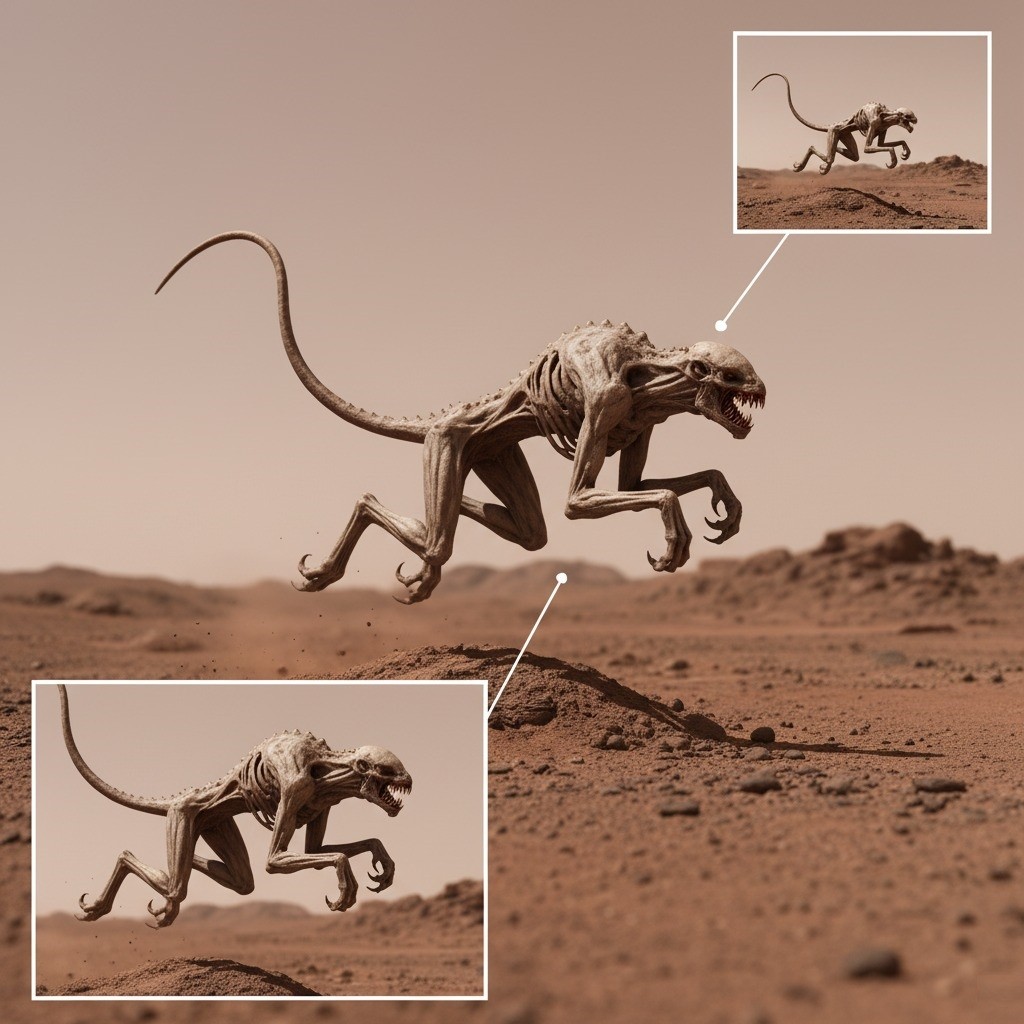The Valles Marineris Anomaly: Mars’ First Predator Unearthed

The search for extraterrestrial life has always fascinated humanity, but in 2092, the quest took a dramatic turn. During a routine survey of Valles Marineris, the largest canyon system on Mars, the Perseverance Rover II recorded what first appeared to be an unusual rock formation. Closer scans, however, revealed something astonishing: the fossilized remains of a massive creature unlike anything seen before. Now known as the Marineris Alpha Predator, this discovery has rewritten our understanding of Martian history and ignited a wave of scientific and philosophical debate.

A Predator Beyond Earth
The fossil shows a creature of formidable design. With powerful limbs, a whip-like tail, and skeletal features that suggest adaptation to low gravity, the Marineris Alpha Predator appears to have been a dominant species in its environment. Unlike microbial fossils once theorized as the only possible Martian life, this is evidence of a large-scale predator—a creature that could hunt, survive, and perhaps even shape ecosystems on another planet.
The sheer size of the fossilized remains suggests an apex role within its ecosystem. Just as Earth’s prehistoric predators defined their eras, this Martian creature may once have ruled the canyons of Valles Marineris.
Implications for Martian Ecosystems
Until this discovery, theories about Martian life focused primarily on microbial or plant-like organisms, sustained by ancient water sources. The existence of a predator implies a complex food chain—and by extension, a thriving ecosystem that once supported multiple forms of life.
Such a revelation forces scientists to reconsider the Red Planet’s history. Was Mars once home to oceans, forests, or wetlands capable of sustaining such a creature? If so, what catastrophic event led to the extinction of these lifeforms, leaving only barren rock and dust behind?
Rewriting Martian History

The fossilized predator suggests that Mars was not just habitable, but inhabited by advanced organisms. Its adaptations—limb structure, body mass distribution, and tail dynamics—indicate evolution shaped by Mars’ unique environment. Researchers now speculate that Mars may have hosted entire ecosystems that rivaled Earth’s prehistoric landscapes.
The discovery also raises the possibility of interplanetary parallels. Did life on Mars develop independently, or could it share a connection with Earth through panspermia—the transfer of life between planets via asteroids and meteorites? If so, the story of life in our solar system may be more intertwined than we ever imagined.
Humanity’s Profound Questions
Beyond science, the Marineris Alpha Predator sparks profound cultural and existential questions. What does it mean to discover the remains of a predator beyond Earth? Could other fossilized species lie hidden in Mars’ vast terrain? Most importantly, does this point to the possibility of surviving organisms still dwelling beneath the planet’s surface?
Conclusion
The Valles Marineris Anomaly marks a turning point in humanity’s exploration of the cosmos. The discovery of the Marineris Alpha Predator—fossilized yet fearsome—challenges everything we thought we knew about Mars. More than a scientific milestone, it is a story of survival, extinction, and the fragile thread of life woven across worlds. As researchers probe deeper into the Red Planet’s mysteries, one thing is certain: the silence of Mars may conceal an ancient history far richer than we ever imagined.











